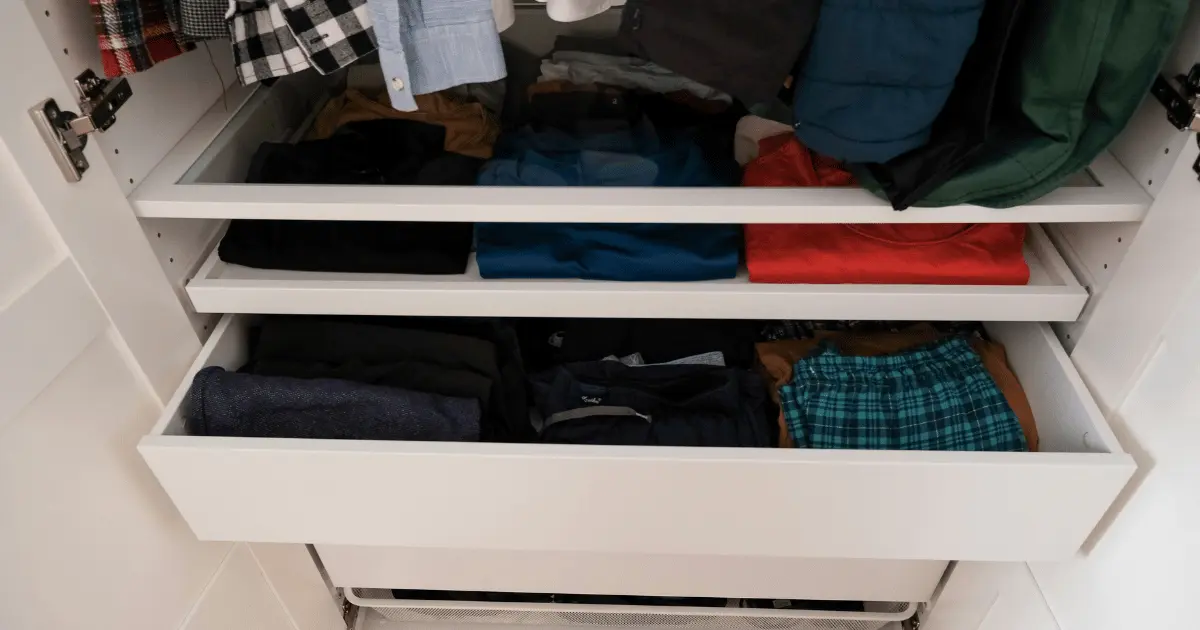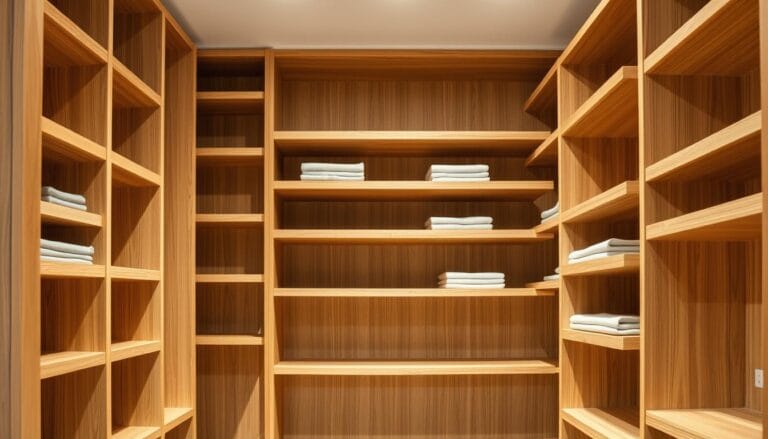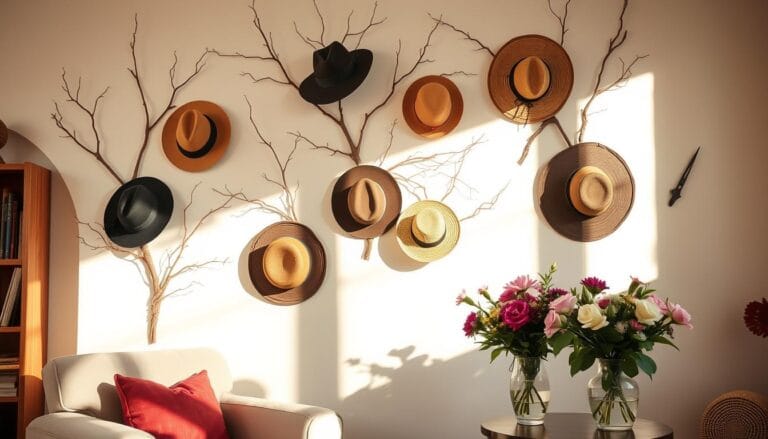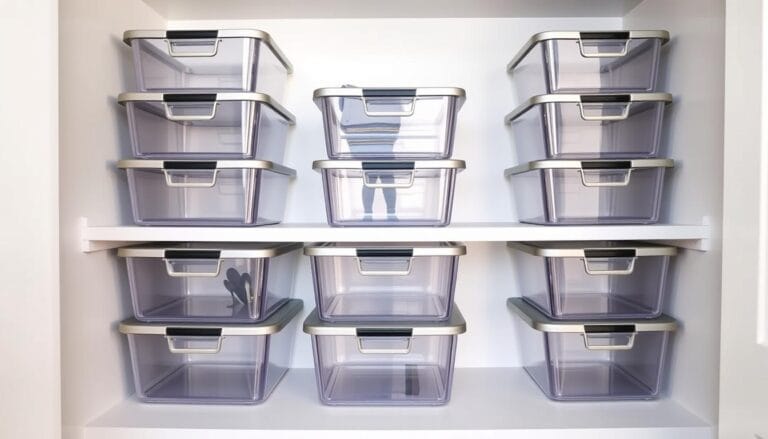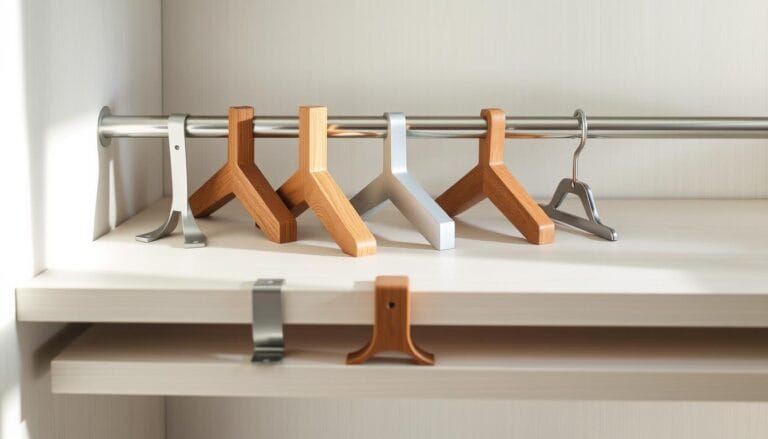How Using Drawer Organizer Clothes Systems
Table of Contents
Managing clothes in your home can be tough. A drawer organizer system is a smart way to make messy areas neat and organized. It helps you use your closet and dresser better, keeping your clothes tidy and easy to find.
Drawer organization is more than just keeping things tidy. It helps protect your clothes and saves you time every day. It also makes your storage look better. Drawer systems work for any closet size, big or small.
How you store your clothes affects your daily life. The right tools and methods mean less time searching and more time enjoying your clothes. This guide will show you how to make the most of your storage and keep your home organized.
Understanding the Benefits of Drawer Organization Systems
Changing your closet can change how you handle your clothes. Good storage solutions do more than just keep things tidy. They make getting ready in the morning much easier.
Drawer systems offer big benefits for your daily life. They help keep your clothes safe and organized. Let’s look at the main advantages:
Space Optimization Benefits
A smart closet makes the most of every drawer inch. Using smart folding and dividers boosts storage. These systems help you:
- Use vertical space well
- Keep your closet tidy
- See where everything is
Time-Saving Advantages
Storage solutions cut down morning mess. When your drawers are neat, finding clothes is fast. This saves you time every day.
- Find what you need quickly
- Make getting dressed easier
- Save minutes each morning
Clothing Care Improvements
Right storage keeps clothes looking good longer. Drawer systems prevent wrinkles and damage. This way, your clothes last longer.
- Stop clothes from getting creased
- Keep clothes in shape
- Protect delicate items
Essential Tools and Materials for Drawer Organization
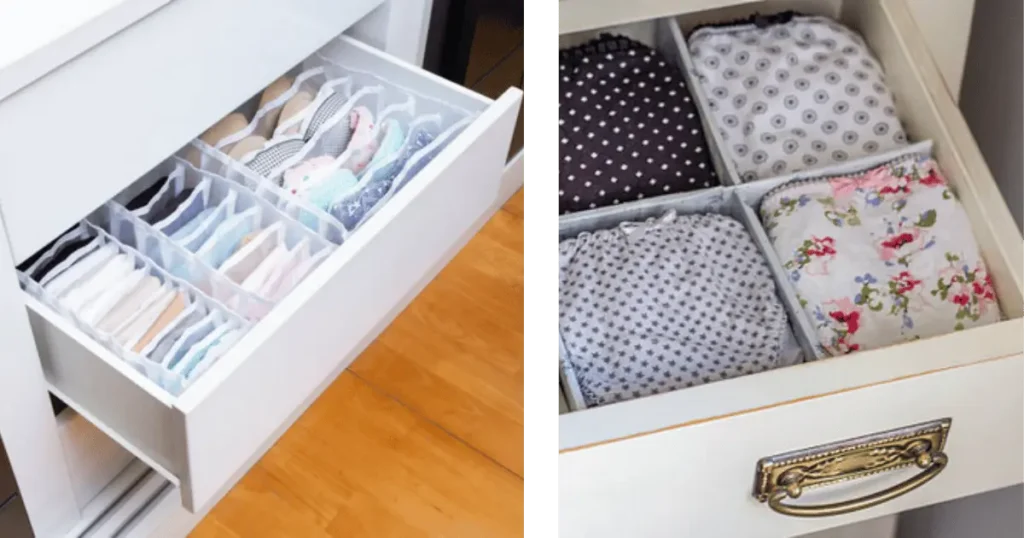
To create an efficient drawer organization system, you need the right tools and materials. Drawer organizer clothes solutions can change how you store clothes. They make managing your wardrobe simple and organized.
Begin by picking high-quality closet and drawer organizers that fit your needs. These tools help you use space better and keep clothes tidy and easy to find.
- Adjustable drawer dividers
- Fabric storage boxes
- Modular plastic containers
- Expandable organizer trays
- Compression storage bags
When picking drawer organizer clothes solutions, think about a few things:
- Drawer size
- The types of clothes you need to organize
- How often you use them
- How durable the material is
- If it can change with your needs
Choose versatile organizers that can grow with you. Look for ones made from materials that are light, easy to clean, and let you see what’s inside. This way, you can make the most of your drawer space.
Good materials include bamboo, clear plastic, and breathable fabric. They’re durable and protect your clothes. Plus, they keep everything organized and easy to find.
Measuring and Planning Your Drawer Space
Starting an effective clothes organizer means knowing your storage space. It’s key to measure and plan well to use your space right. Before organizing, you must understand your drawer’s size and how much it can hold.
Accurate Drawer Measurement Techniques
Get a measuring tape and follow these steps to measure your drawer:
- Measure the interior length, width, and depth precisely
- Record measurements in both inches and centimeters
- Account for any internal obstructions or irregular shapes
Storage Capacity Assessment
To know your drawer’s storage potential, you need more than just measurements. Think about these factors when checking your storage capacity:
- Estimate the number of clothing items per drawer
- Evaluate the typical thickness of your folded garments
- Plan for seasonal clothing variations
Clothing Type Planning Strategy
Different clothes need different storage ways. Light items like t-shirts need special folding, unlike thick sweaters. Make a plan that fits the weight, folding, and how often you wear them to make your organizer work best.
Pro tip: Take photos of your empty drawers to see how you can organize them before you start.
Types of Drawer Organizer Clothes Systems Available
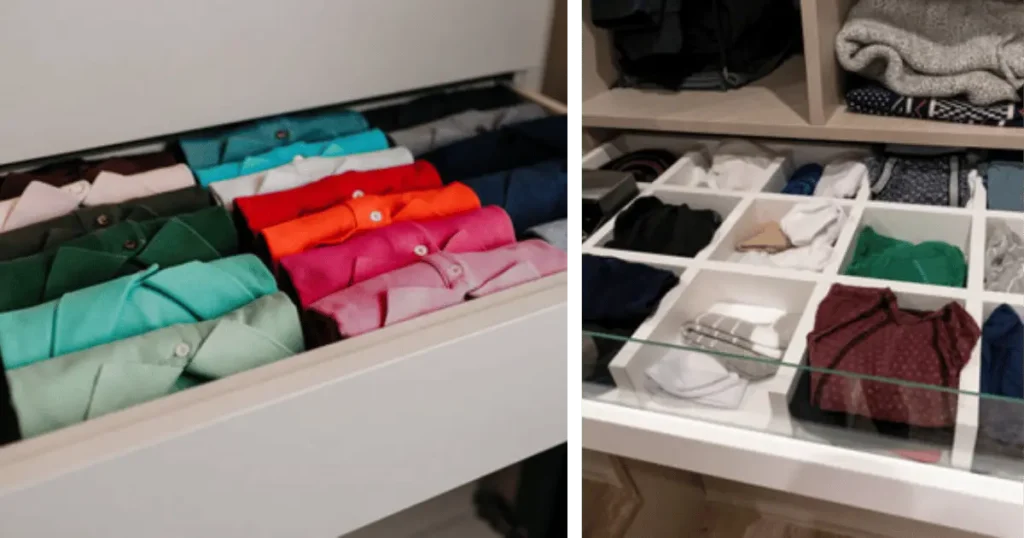
Choosing the right drawer organizer can change your closet and how you store clothes. There are many types of organizers for different needs and spaces. Knowing these options helps you make your wardrobe more efficient and organized.
Check out these popular drawer organizer clothes solutions:
- Expandable Dividers: Versatile systems that adjust to your drawer size
- Modular Plastic Trays: Lightweight and easy to clean closet clothes organizer options
- Fabric Compartment Boxes: Soft-sided storage solutions for delicate garments
- Bamboo Drawer Separators: Eco-friendly and stylish organization tools
Plastic drawer organizers are great for everyday clothes. They are durable and let you see what’s inside. Fabric systems are softer for things like underwear and socks. Wooden or bamboo organizers add elegance and keep clothes organized.
When picking a drawer organizer, think about these things:
- Drawer dimensions
- Types of clothing you need to store
- Material durability
- Ease of cleaning
- Aesthetic preferences
Brands like Marie Kondo’s KonMari line and Container Store have great closet organizers. They offer everything from simple dividers to complex systems. You can customize them to fit your storage needs.
Best Practices for Sorting Clothes Before Organization
Getting your wardrobe ready for organization needs a smart plan. Start with sorting and checking your clothes. This way, you can turn your closet and drawers into great storage spots.
Seasonal Clothing Categories
Sort your clothes by season to save space and make them easy to find. Set up areas for:
- Winter clothing (heavy coats, sweaters, thermal wear)
- Summer attire (lightweight shirts, shorts, sundresses)
- Transitional pieces (light jackets, layering items)
- Year-round basics (neutral colors, versatile items)
Frequency of Use Classification
Sort clothes by how often you wear them. Organize your closet and drawers with zones for:
- Daily wear items (easily accessible)
- Occasional clothing (less prominent placement)
- Special occasion outfits (storage boxes or back of closet)
Size and Type Grouping
Group clothes by size and type for easier management. This makes finding what you need quick. Sort by:
- Formal vs. casual wear
- Fabric types (delicate, sturdy, athletic)
- Sleeve and pant lengths
- Work and leisure clothing
Using these sorting tips will make your wardrobe more functional. It will save you time and reduce stress every day.
Step-by-Step Installation Guide for Drawer Organizers
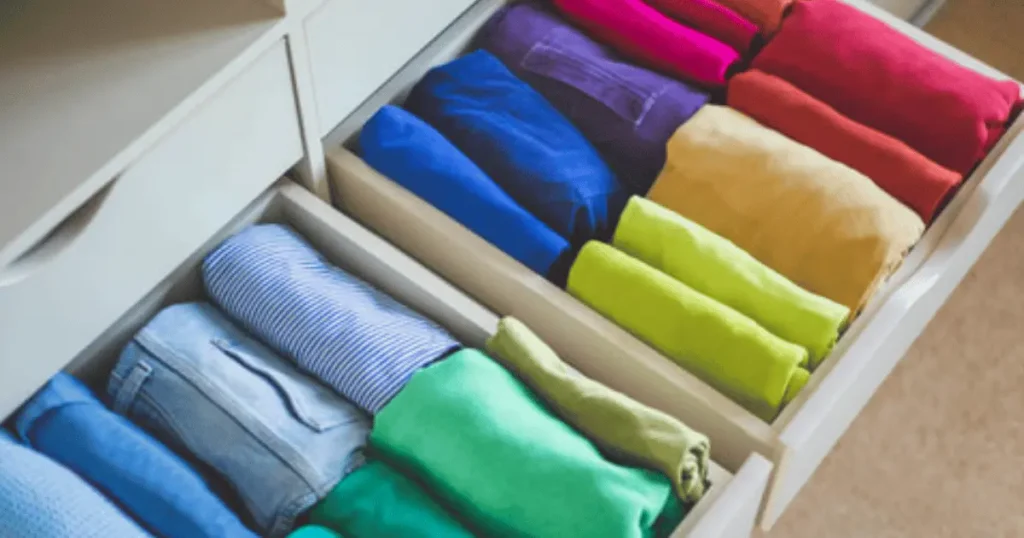
Installing drawer organizer clothes systems can make your storage space neat and organized. The right clothing organizers storage solution maximizes drawer space. It keeps your wardrobe tidy.
Before you start, get these tools:
- Measuring tape
- Scissors
- Drawer organizer set
- Cleaning cloth
First, empty your drawer. Clean the inside well for a fresh start. Measure the drawer’s size to pick the right organizers.
- Choose organizers that fit your drawer
- Place dividers to make sections
- Check the fit before placing
- Adjust dividers for different clothes
Think about what you’ll store when placing organizers. Use small spaces for socks and underwear. Larger areas are good for folded shirts and sweaters. Some organizers adjust, letting you tailor your storage.
Pro tip: Add a bit of extra space in each area. This prevents overstuffing and keeps clothes wrinkle-free.
Maximizing Vertical Space with Drawer Dividers
To get the most out of your closet, you need smart vertical space management. Drawer organization is more than keeping things tidy. It’s about setting up a strategic storage system that uses every inch of space.
Efficient vertical storage turns cluttered drawers into organized compartments. With the right closet and drawer organizers, you can change how you store and access your clothes.
Stacking Techniques for Different Fabrics
Different fabrics need special stacking methods to avoid wrinkles and keep quality up. Here are some effective techniques:
- Delicate fabrics like silk and chiffon: Roll loosely and place in padded dividers
- Cotton and casual wear: Fold compactly using vertical stacking methods
- Knitted items: Layer with tissue paper to prevent stretching
- Workout and athletic clothing: Use breathable separator compartments
Using Height Adjustable Separators
Height adjustable separators are a big deal for customizable drawer organization. These flexible dividers let you make custom compartments that fit your changing wardrobe needs.
- Adjust separator heights to accommodate bulky sweaters
- Create narrow sections for accessories like belts and scarves
- Separate different clothing categories within the same drawer
- Easily reconfigure spaces as your clothing collection evolves
By using these vertical space strategies, you’ll turn your drawers into efficient, easy-to-navigate storage solutions. They’ll protect and showcase your clothes well.
Organizing Different Clothing Items Efficiently
Learning to organize your clothes can change your drawer space and make mornings easier. A good plan for organizing clothes helps you use space better and keeps your closet neat. Each type of clothing needs its own way of folding and storing to stay in good shape and avoid wrinkles.
For t-shirts and casual tops, try these storage tips:
- Use the vertical folding technique to create compact stacks
- Group shirts by color or style for easy selection
- Roll lighter fabrics to prevent creasing
Pants and jeans need a special way to be organized. Fold them neatly to avoid wrinkles and save space. Hang dress pants and tailored trousers to keep their shape. Casual denim can be folded or rolled.
Underwear and socks need their own special spots. Use drawer dividers to keep them neat and easy to find. Drawer organizers with adjustable sections are great for different sizes and types of undergarments.
Accessories like belts, scarves, and ties need careful storage. Use special storage like hanging organizers or dedicated drawer spots to keep them wrinkle-free and in good shape.
- Roll belts to prevent creasing
- Use clip hangers for scarves
- Store ties on dedicated racks or rolled in drawer organizers
By using these tips, you’ll have a system for managing your clothes efficiently.
Maintaining Your Organized Drawer System
To keep your drawer organizer clothes system in top shape, you need to care for it regularly. Your closet clothes organizer is a big investment. It needs regular maintenance to stay functional and clean.
Creating a Maintenance Routine
Make a simple maintenance schedule to keep your drawer system in order. Here are some important practices to follow:
- Weekly quick tidy-up of drawer contents
- Monthly deep reorganization
- Seasonal clothing rotation and assessment
Cleaning and Care Tips
Proper cleaning is key to keeping your drawer organizer clothes in good shape. Follow these essential cleaning tips:
- Empty drawers completely before cleaning
- Wipe down drawer interiors with a mild cleaning solution
- Allow surfaces to dry completely before replacing organizers
- Vacuum or wash fabric drawer dividers as needed
Regular Inspection Strategies
Check your closet clothes organizer regularly for signs of wear or damage. Look for:
- Loose dividers or separators
- Fabric tears or structural issues
- Accumulated dust or debris
Regular maintenance prevents bigger problems and makes your drawer system last longer. A few minutes of care each day can save you a lot of time and trouble later.
Storage Solutions for Special Clothing Items
Managing unique clothing items can be tough, even for the most organized. Delicate fabrics, big clothes, and accessories need extra care. This keeps them looking good and lasting longer.
Here are some smart ways to store special clothes:
- Silk and delicate fabrics need breathable garment bags
- Vintage or high-end pieces require padded hangers
- Accessories like scarves and ties benefit from dedicated clothes organizer systems
Special storage can change how you care for tricky clothes. Vacuum-sealed bags are great for seasonal items like winter coats or wedding dresses. They keep dust out and save space in your closet.
Using digital storage trackers can also help. Some apps let you list special items, track cleaning, and note valuable pieces. They can remind you when to care for certain clothes.
Get drawer dividers made for unique items. Padded jewelry boxes, tie racks, and adjustable dividers keep delicate accessories safe and organized.
- Use acid-free tissue paper for storing vintage clothing
- Choose cedar blocks to protect against moths
- Select climate-controlled storage for leather and suede items
Your special clothes need careful storage. Using these smart storage tips will keep your clothes safe and your closet tidy.
Common Mistakes to Avoid When Organizing Drawers
Many people make big mistakes when organizing their drawers. One major error is overloading drawers. This can damage your clothes and mess up your organization. It’s important to create space that lets clothes breathe and keeps them in shape.
Another mistake is not updating your drawer system as your wardrobe changes. Your needs can change due to seasons, weight, or career. Regularly check if your system still works for you.
Don’t forget to keep your drawers clean and organized. Without regular cleaning, they can get messy and less useful. Clean them out every few months to keep them in good shape.
Finally, don’t buy storage solutions on a whim. Buying too much can be expensive and confusing. Think about what you really need, measure your drawers, and choose organizers that fit your needs. Planning carefully will help you organize better.

